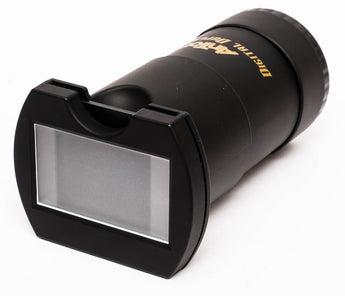Antor Slide &
Negative Copier/Duplicator Review.
Price: $66.87 + Postage. It can be found here in my online The Film Bloke Store.
I've had a couple of these Duplicator/Copiers in stock for a while, and I thought I'd review them myself. My own neg copy setup is dismantled at the moment so this was a good time to do the review.

Before I start, I don't
use a scanner to digitise my negs, except for one period some years ago where I used a Plustek scanner on some old family negs, which I found very good, but slow.
I prefer the DSLR method because I
find it faster and gives me good resolution, and the bonus is, I
already own all the stuff I needed, so there was no incentive to buy anything else. I
understand this option won't work for everyone, our needs vary. I'm not going
to enter into arguments about which is better - do whatever feels good (but not so much as to go blind).
The duplicator option will suit people that don't do huge volumes of 35mm and don't want to spend the many, many hard bucks on a bespoke Scanner.
The Copier comprises a
tube with a 52mm female thread at the camera end to attach to a lens
of your choosing via step up/down adapter rings, which are not
supplied. I used the M42 Takumar 50mm f4 macro. The neg holder and
diffuser are at the business end.
I'ts best to use a lens with it where the front element doesn't rotate during focusing.
The copier has a front optic, presumably to narrow the lens' field of view. I generally don't like non-lens maker's glass in budget adapters
or attachments, they are not as good as the glass in most lenses, so I wanted to see how it affected clarity and resolution.
To use, it is quick and
simple. Blow the dust/hair/crud off the neg, insert it into the
carrier by just sliding it in, point at at the sky or something
bright to focus. You could just take a shot at this stage, but I
decided to use a flash bounced off a white wall to light the negs. I
find it gives better contrast.
Slides are copied by removing the little neg holder which just pulls out of the top, and slide your slide in (pun) to take the place of the neg holder.
It's best to forget
automation when duplicating, use manual focus, exposure and flash
output if you can. In my case I set the aperture to f11, shutter to
1/125s, ISO to 100, the 40GN flash was set at ¼ power, at a distance of 1 metre
from a white wall.
The film I used was
Rollei RPX 100 35mm in a Bessa-R and with a Canon 35mm LTM lens.
The DSLR I used for the
copy is a Canon 760D 24mp, 6000x4000 image, shot in RAW.
Negs were developed in
Rodinal 1+25 for 9 minutes with a couple of gentle agitations every
minute.
As with most modern
emulsions, the contrast in the RPX seems to be a bit lacking but was
easily corrected in PS using the Curves tool in Camera Raw.
 As expected there was
softness in the corners of the digitised negs, the centre was
acceptable for a budget copier, and overall the outcome was ok to
post online or make moderate size prints from, probably no bigger
than 8x10. I think the results were superior to the el-cheapo 5mp
copiers that proliferate ebay, they don't have the benefit of a good
DSLR sensor and a Macro lens.
As expected there was
softness in the corners of the digitised negs, the centre was
acceptable for a budget copier, and overall the outcome was ok to
post online or make moderate size prints from, probably no bigger
than 8x10. I think the results were superior to the el-cheapo 5mp
copiers that proliferate ebay, they don't have the benefit of a good
DSLR sensor and a Macro lens.
I will soon have in stock a different type of Neg copier, which I will also review when it
arrives, the new duplicator one has no optics of it's own and will copy negs from 35
mm to 6x7. Basically it's a multi format neg holder with rails
attached by a plate to the tripod mount on the camera, and use whatever lens
you have that suits best, with or without extension tubes.
To look at the Duplicator and more example images in detail, follow this link to my flickr album, which allows much greater resolution, just click on the images to enlarge.
To Summarise.
Pros:
Fast
Small
Cheap
Lightweight
Fits most lenses with an adapter ring.
Output fine for posting online or making medium size prints.
Cons:
Not as sharp as most lenses.
Soft in the corners
No good for giant prints
No good for commercial work


